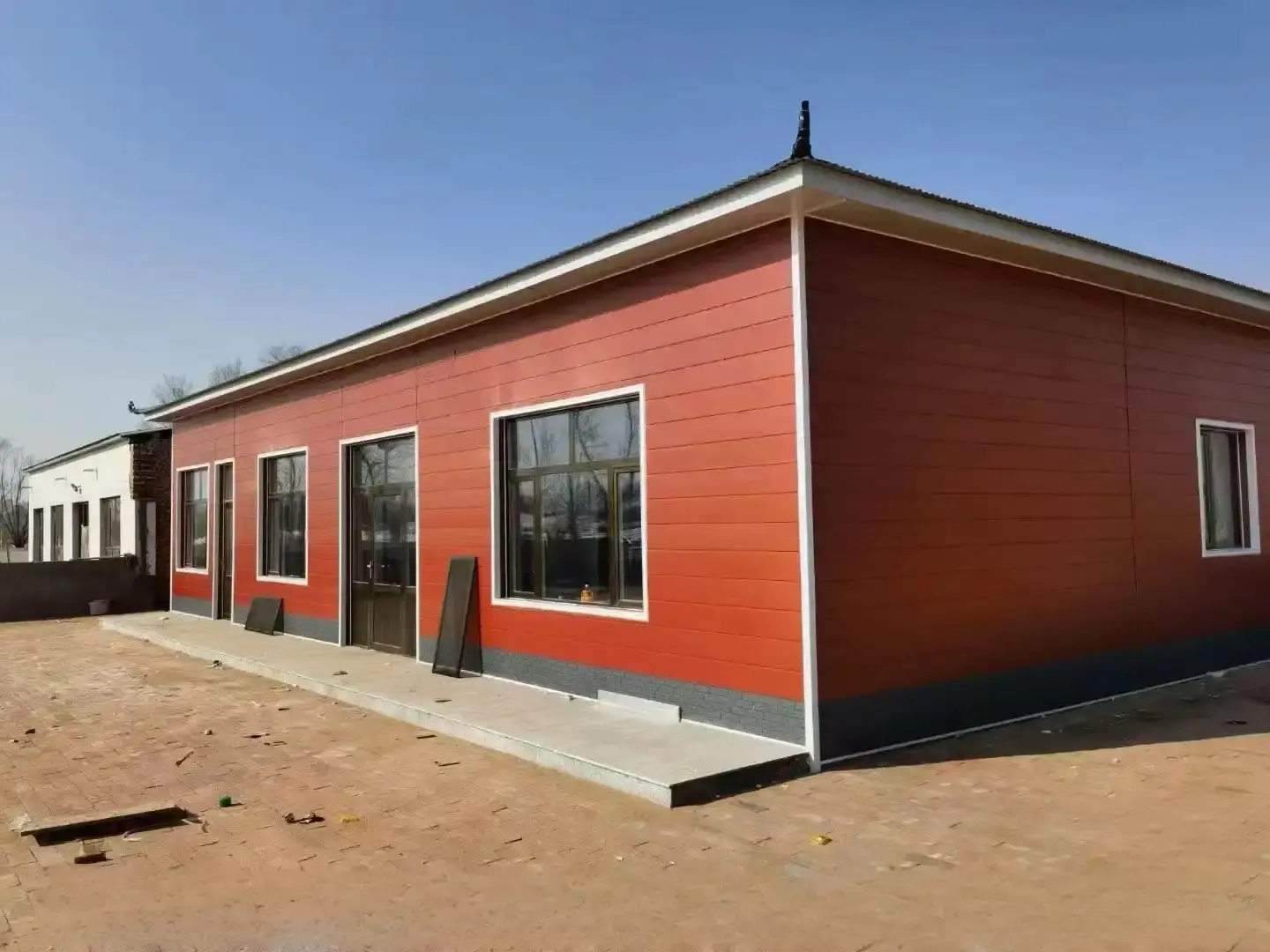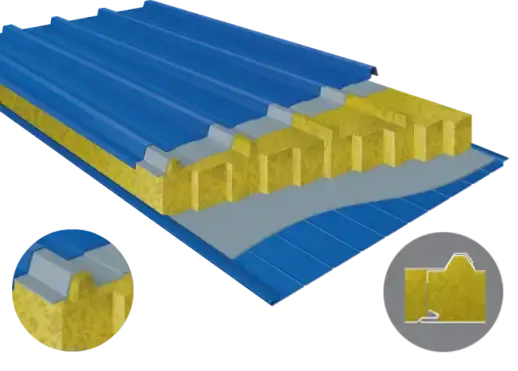The Advantages of Corrugated Sandwich Panels in Modern Construction
Corrugated sandwich panels have revolutionized the construction industry with their unique combination of strength, insulation, and versatility. These panels, composed of two metal sheets with an insulating core, offer a myriad of benefits that make them an excellent choice for various building applications.
Enhanced Insulation and Energy Efficiency
One of the primary advantages of corrugated sandwich panels is their superior insulation properties. The core material, typically made of polyurethane, polystyrene, or rock wool, provides exceptional thermal performance. This insulation helps maintain consistent indoor temperatures, reducing the need for heating and cooling systems and ultimately lowering energy costs. The energy-efficient nature of these panels makes them an environmentally friendly option for eco-conscious builders and property owners.
Durability and Weather Resistance
Corrugated sandwich panels are engineered to withstand harsh environmental conditions. The outer metal sheets, often made of aluminum, steel, or stainless steel, offer excellent resistance to corrosion, UV rays, and other weathering factors. This durability ensures that buildings constructed with these panels maintain their structural integrity and appearance for years, even in challenging climates. The long-lasting nature of corrugated sandwich panels translates to reduced maintenance costs and increased building longevity.
Versatile Design Options
Architects and designers appreciate the flexibility offered by corrugated sandwich panels. These panels can be customized in terms of color, texture, and pattern, allowing for unique and visually appealing building exteriors. The ability to tailor the panels to specific design requirements makes them suitable for a wide range of architectural styles, from modern industrial buildings to sleek residential complexes. This versatility in design, coupled with the functional benefits, makes corrugated sandwich panels a popular choice among corrugated sandwich panel manufacturers and builders alike.
Comparing Performance: Corrugated Sandwich Panels vs Traditional Metal Roofing
While both corrugated sandwich panels and traditional metal roofing have their place in construction, a closer comparison reveals some key differences in performance and functionality.
Thermal Insulation Capabilities
Corrugated sandwich panels significantly outperform traditional metal roofing in terms of thermal insulation. The insulating core of sandwich panels provides a high R-value, effectively reducing heat transfer between the interior and exterior of the building. This superior insulation leads to improved energy efficiency and better temperature control. In contrast, traditional metal roofing, while reflective, offers minimal insulation on its own and often requires additional insulation materials to achieve comparable thermal performance.
Structural Integrity and Load-Bearing Capacity
Both corrugated sandwich panels and metal roofing panels offer excellent structural strength, but in different ways. Sandwich panels provide a unified structure with high rigidity due to their composite nature. This allows them to span longer distances without additional support, potentially reducing overall construction costs. Traditional metal roofing, while strong, may require more frequent structural supports. However, metal roofing excels in its lightweight nature, making it an ideal choice for retrofitting existing structures with minimal load-bearing capacity.
Installation and Maintenance Considerations
When it comes to installation, corrugated sandwich panels often have an edge. Their all-in-one design, combining insulation and finished surfaces, can significantly reduce installation time and labor costs. Many corrugated sandwich panel manufacturers offer panels with interlocking systems, further simplifying the installation process. Metal roofing, while relatively straightforward to install, may require additional steps for insulation and weatherproofing. In terms of maintenance, both options are relatively low-maintenance, but the seamless nature of sandwich panels can reduce the potential for leaks and other issues over time.
Innovations in Corrugated Sandwich Panel Technology
The field of corrugated sandwich panel technology is continually evolving, with manufacturers introducing new features and improvements to enhance performance and versatility.
Advanced Core Materials for Improved Performance
Corrugated sandwich panel manufacturers are exploring innovative core materials to enhance the panels' performance. New developments include nano-enhanced insulation materials that offer superior thermal properties in thinner profiles. Some manufacturers are also incorporating phase-change materials into the core, allowing the panels to absorb and release heat more effectively, further improving energy efficiency. These advancements in core technology are pushing the boundaries of what's possible with sandwich panel construction.
Smart Integration for Building Management
The latest corrugated sandwich panels are being designed with smart building integration in mind. Some panels now include embedded sensors that can monitor temperature, humidity, and even structural integrity. This data can be integrated into building management systems, allowing for real-time optimization of energy use and early detection of potential issues. The integration of smart technology into corrugated sandwich panels represents a significant step towards more intelligent and efficient building envelopes.
Sustainable Manufacturing Processes
As environmental concerns become increasingly important in construction, corrugated sandwich panel manufacturers are focusing on sustainable production methods. This includes using recycled materials in panel production, implementing energy-efficient manufacturing processes, and designing panels for easy disassembly and recycling at the end of their life cycle. These eco-friendly innovations are making corrugated sandwich panels an even more attractive option for green building projects.
Conclusion
In the comparison between corrugated sandwich panels and metal roofing panels, it's clear that both have their strengths. However, corrugated sandwich panels offer a unique combination of insulation, durability, and design flexibility that makes them particularly well-suited for modern construction needs. Their superior thermal performance, structural integrity, and innovative features position them as a versatile solution for a wide range of building projects. As technology continues to advance, we can expect even more impressive developments in corrugated sandwich panel design and functionality.
If you're considering using corrugated sandwich panels for your next construction project, we invite you to explore the comprehensive range of options available from Weifang Sandong Building Materials Co., Ltd. Our team of experts is ready to help you find the perfect solution for your specific needs, offering customized panels that combine aesthetics with top-tier performance. For more information on our corrugated sandwich panel solutions and how they can benefit your project, please contact us at info@sdqsc.com.
FAQ
What are the main advantages of corrugated sandwich panels over traditional metal roofing?
Corrugated sandwich panels offer superior insulation, fire resistance, and customizable designs. They provide better energy efficiency, versatility in application, and often require less maintenance than traditional metal roofing.
Can corrugated sandwich panels be used for both roofing and wall cladding?
Yes, these panels are versatile and can be used for both roofing and wall cladding in various types of buildings, from residential to industrial structures.
How do corrugated sandwich panels contribute to energy efficiency?
The insulating core of these panels provides excellent thermal performance, reducing heat transfer and helping maintain consistent indoor temperatures, thus lowering energy consumption for heating and cooling.
References
1. Building Design & Construction. (2021). "The Benefits of Insulated Metal Panels in Construction."
2. Journal of Building Engineering. (2020). "Thermal Performance of Sandwich Panels in Building Envelopes: A Comprehensive Review."
3. Construction and Building Materials. (2019). "Recent Advancements in Corrugated Sandwich Panel Technology."
4. Energy and Buildings. (2018). "Comparative Analysis of Metal Roofing Systems and Insulated Sandwich Panels for Energy Efficiency in Commercial Buildings."
